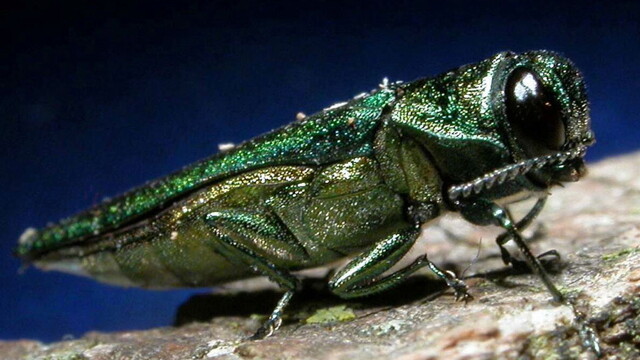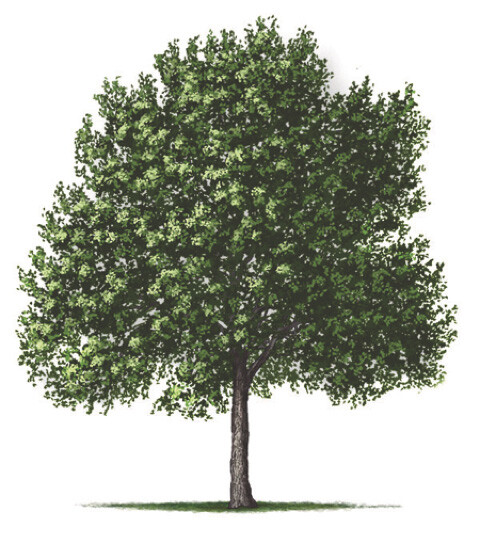Watch Your Ash
how to prepare and prevent the spread of Emerald Ash Borer

Eau Claire could see massive devastation of a huge percentage of it’s tree population very soon. Perhaps you’ve seen the signs posted in local parks, campgrounds, and forests that warn against transporting wood from areas more than a certain distance away. Signs throughout Cook Fork Lake County Park, for instance, state that firewood can’t be brought into the campground from more than 25 miles outside the county.
We have 28,815 publicly managed trees in the city, and 32 percent of them are ash. That’s 9,000 trees (on top of an estimated 30,000 more on private property). So we stand to lose nearly 40,000 trees in Eau Claire alone.
Those signs aren’t kidding – they’re posted in an effort to prevent further infestation of Emerald Ash Borer, a half-inch-long, metallic green beetle that’s estimated to have destroyed more than 50 million ash trees in the Midwest. Considering that, as reported on the DNR’s website, Wisconsin forests alone contain more than 770 million ash trees that make up 20 percent of the urban tree population, we have a lot to potentially lose.
The EAB can wreak havoc on the population because the larvae spend their life inside ash trees feeding on inner bark without being seen by humans, who then transport infected trees (e.g. firewood), allowing the pests to spread. According to the DNR, these insects are “100 percent fatal” to ALL ash trees regardless of size, age, or health status.
They were first discovered in Michigan in 2002, and now have spread to 15 states and two Canadian provinces. First discovered in Wisconsin in 2008, they’ve since been confirmed in nine Wisconsin counties, including St Paul and La Crosse County just last month.
 Here’s the really scary stuff: they are usually detected in an area 4-5 years after first getting there, and it can take them as little as five years to decimate an ash population. In Eau Claire, we have 28,815 publicly managed trees in the city. Thirty-two percent of them are ash. That’s 9,000 trees (on top of an estimated 30,000 more on private property throughout the city). So we stand to lose nearly 40,000 trees in Eau Claire alone.
Here’s the really scary stuff: they are usually detected in an area 4-5 years after first getting there, and it can take them as little as five years to decimate an ash population. In Eau Claire, we have 28,815 publicly managed trees in the city. Thirty-two percent of them are ash. That’s 9,000 trees (on top of an estimated 30,000 more on private property throughout the city). So we stand to lose nearly 40,000 trees in Eau Claire alone.
The EAB has not been confirmed in the Chippewa Valley, and officials are working to prevent that. Urban “ash management” steps include removing infected or soon-to-be infected trees and utilizing insecticide when necessary, but also keeping the public aware and informed.
If you think losing some pretty trees isn’t a big deal, realize that this has cost communities millions of dollars to remove, replace, or treat these trees. It also causes an increase in storm water runoff, trees falling on power lines, energy use, water use, and cost in heating and cooling. Oh yeah, and air quality goes down. The DNR recommends monitoring your own trees for signs of EAB, not moving infested wood, and of course, reporting any signs of EAB immediately to a hotline at 1-800-462-2803.
Save your trees!
Visit datcpservices.wisconsin.gov/eab for more info.





















